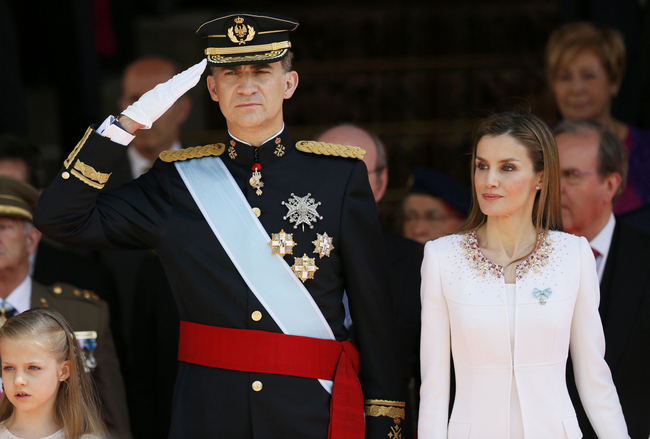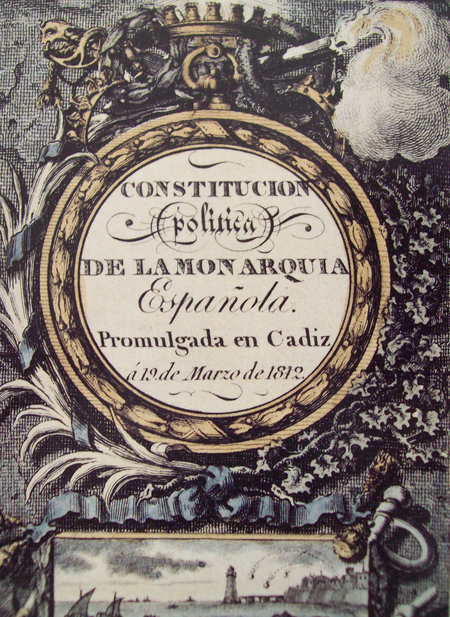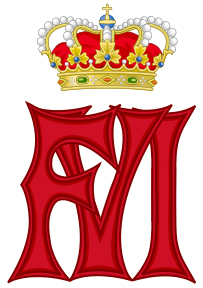Den/The Day continues the discussion on the efficiency and democratic nature of the institution of monarchy in Europe. We first cited the UK as an example. In the article titled “Monarchistic Idea in the 21th Century,” we noted that “for a great part of Britons, the crown is not just a historical souvenir, but also an institution, quite efficient and necessary in the world of today.” On the other hand, Den’s contributor, philosopher Andrii Baumeister offered arguments about the modernity of monarchy (Den, No. 78-79). In the issues of The Day, No. 32 (May 23, 2017) and No. 36 (June 8, 2017), we examined the role of monarchy in Denmark and the Netherlands, respectively. Now we offer our readers a glimpse into the link between the past and the present in the Kingdom of Spain.
ON PARTICULARITIES OF THE SPANISH MONARCHY
Isabella I of Castile and Ferdinand II of Aragon are considered founders of the Kingdom of Spain. The foundation of the Spanish colonial empire was laid thanks to the voyage of Columbus in 1492 and discovery of the New World. Spanish King Charles I (ruled in 1516-56) became Holy Roman Emperor Charles V, succeeding his grandfather Maximilian I. As his power spread across Spain, Naples, Sicily, the Habsburgs’ territories in Belgium and the Netherlands, Austria, and colonies in the New World, Charles became Europe’s most powerful monarch.
The last Habsburg dynasty ruler of Spain was the ailing Charles II (1665-1700) who left no heirs, and the crown went after his death to French Prince Philip de Bourbon, Duke of Anjou, grandson of Louis XIV and great-grandson of Philip III.

KING FELIPE VI AND HIS WIFE, JOURNALIST LETIZIA ORTIZ ROCASOLANO, WHOM HE MARRIED ON MAY 22, 2004 / REUTERS photo
After more than a 100-year-long period of instability in Europe, constitutional rule in Spain was restored in 1834, and, under a new constitution adopted three years later, the monarch’s power was restricted with a bicameral Cortes.
The revolutionary events of 1854-56 ended up with the dissolution of the Cortes and the annulment of liberal laws. The 1869 Constitution proclaimed Spain a hereditary monarchy. The monarchic constitution of 1876 enshrined a new system of limited parliamentary authority, which guaranteed political stability and representation of mostly the middle and upper classes.
Meanwhile, the 1874-1931 period on the territory of present-day Spain is often called “Spanish Restoration” – from the restoration to a new decline of monarchy in Spain.
THE KING IS A SYMBOL OF UNITY AND PERMANENCE
It is only in 1947 that Spain was proclaimed a kingdom again, but the throne remained vacant under the regency of Caudillo Franco. The death of Franco in November 1975 paved the way for dismantling the fascist regime and making democratic changes. In October 1977, political parties signed the Moncloa Pact that envisaged a number of measures in politics and the economy to complete the country’s transition to democracy. A new constitution was passed and came into force in December 1978.
Under Article 56.1 of the Constitution, the king is the head of state and a symbol of unity and permanence. He arbitrates and moderates the regular functioning of the institutions, assumes the highest representation of the Spanish State in international relations, especially with the nations of its historical community, and exercises the functions expressly attributed to him by the Constitution and the laws.

THE CONSTITUTION OF SPAIN PROMULGATED ON MARCH 19, 1812, IN CADIZ, THE ONLY SPANISH CONTINENTAL CITY FREE OF FRENCH OCCUPATION
Speaking in Barcelona on December 14, 2011, Felipe, the heir apparent at the time, said: “Serving the State, serving all Spaniards, with dedication; working for the general interest and promoting actions and initiatives for the common good; all this constitutes an unwavering, steadfast personal commitment for me.”
A RESPECTIVE ATTITUDE TO THE MONARCH
The ordinary Spaniard takes a very respective attitude to the monarch. The overwhelming majority of Spanish citizens are proud of living in a monarchic country. And, in spite of some scandalous events that involve the royal family, this attitude to the king and his family remains unchanged. What is more, the attitude to King Felipe VI is not worse than to the immensely popular former King Juan Carlos.
The role of the king is a very important component in the monarchic system, and the monarch’s opinion is always taken into account. In other words, as experts point out, people always take a serious attitude to him.
The king and his wife always take part in many protocol events, including those of a humanitarian nature, such as raising funds for children and the disabled, etc. This attracts the close attention of everybody.
As for the royal family’s housing, the monarch has several palaces in the capitals and in the regions, where he and members of his family can put up at any moment.
In one of the royal palaces, the monarch receives credentials. This palace is open for excursions and a wide circle of visitors. Thus the royal family gives ordinary people an opportunity to see where it lives and works.
It is a very pleasant thing to communicate with the king and the queen. Moreover, both monarchs – the previous Juan Carlos and the current Felipe VI – are very well informed about events in Ukraine. While the subject of the conversation with Juan Carlos was the development of bilateral relations, we were very pleased to hear that the present incumbent knows about the situation in Ukraine.
THE ROLE OF MONARCHY IN THE DEVELOPMENT OF DEMOCRACY
Monarchy plays quite a sizable role in the preservation and development of democracy in Spain. There is a direct link between the king and the government, and both sides are making joint efforts, which is the guarantee of a stable development of the country.
As the country’s leader, the king performs a representative function and makes decisions aimed at ensuring, preserving, and developing democracy. The royal court takes the necessary measures in this direction.

THE PERSONAL MONOGRAM OF KING FELIPE VI
The royal family’s attitude to the Catalan issue does not differ from that of the ruling People’s Party. The idea is that the central government should see to it that the Catalans, who enjoy all the rights and are duly funded by the central government now, can develop their ethnic culture and traditions.
Moreover, the royal court is making a lot of efforts to show monarchy to its best advantage.
SPANIARDS SUPPORT MONARCHY
All the Spanish grassroots support the now existing setup in the Kingdom of Spain. They believe that the monarchic system better meets the interests of their country today and in the future. Experts explain that such a feature as respect for family values is in general inherent in Spaniards, and the royal family’s example is of paramount importance to them.
Besides, another factor that contributes to this is that Catholicism is the dominant religion in Spain. The national religion and monarchy are closely related. For, on its part, the state supports Catholicism as titular religion in Spain.








